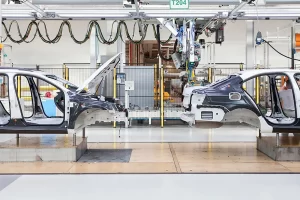
The Impact of Ride-Sharing on the Auto Industry
The impact of ride-sharing on the auto industry is changing the way we travel. Millennials are leading the way in a new way of life that chooses shared rides over owning a car. Ride-sharing is also making Bike and bicycle sharing more affordable for shorter commutes.
Millennials are on their way to creating a lifestyle that chooses shared rides over ownership
The Millennial Generation is one of the largest generations to ever grace our shores. They have changed the way we buy, sell and live.
Unlike past generations, millennials are on the cusp of changing the very way we sell and market. As a result, they carry a wide range of interests and a varied mindset.
One of the most prominent trends in a millennial lifestyle is to prioritize experiences over things. According to a Harris study, spending on experiences is up 70% since 1987.
Another one is the sharing paradigm. More than 80% of Americans under the age of 35 use some kind of sharing service. This includes services like Uber and Airbnb.
While a lot of this may seem socialist, sharing does have some perks. For example, it amplifies the reach of your marketing campaign. It can also help you avoid buying items you don’t need.
While the millennial lifestyle isn’t exactly known for its sophistication, it does have its share of notable features. In particular, the millennial’s preference for experiences has created opportunities for start-ups.
Regulations impact the growth of ride-sharing
There has been a growing discussion regarding how regulations impact the growth of ride-sharing in the auto industry. Uber is one of the largest ride-sharing services in the world, and it has been involved in several cases where regulation was attempted.
The sharing economy involves a number of issues relating to competition, safety, and atomistic markets. However, these are not always a direct result of the service offered. In fact, many of the underlying economic mechanisms of automated vehicle markets are similar to those of traditional markets.
Regulations are not only intended to ensure consumer protection, but they can also help improve efficiency. For example, price regulation is an important form of market intervention.
In the taxicab industry, regulations respond to safety concerns. An unregulated market would have a high number of vehicles, low wages, and a poor quality of service.
Large-scale ride-sourcing services are a new entrant into the passenger transport industry. These services utilize fleets of private cars and app technology to provide on-demand transportation. As the services grow, they challenge the current transport framework.
Bike/bicycle sharing is an economical option for shorter commutes
Bike/bicycle sharing is a convenient and economical way to make short commutes. It allows people to try out riding a bike without having to commit to owning one.
Bike share systems are becoming a common form of shared mobility, and they are spreading around the world. These systems allow users to rent bikes and drop them off at nearby bike stations. This reduces parking hassles and allows for convenient travel.
Several studies have attempted to determine what factors influence bike/bicycle share usage. Most of them rely on system-use data. Others use user surveys to identify the factors affecting bicycle sharing.
One of the most significant factors is travel time. When taking longer trips, it is not surprising that riders choose a bike share instead of a personal bike. In fact, a study conducted in 2015 found that bike share users drove 25% to 52% less than their personal car counterparts.
Bicycle share systems are becoming a popular choice for transportation in Asian countries. The resulting reduction in traffic congestion is one of the primary reasons for their rapid growth.
Vehicle-as-a-service is expected to grow
Vehicle-as-a-service is a growing industry within the automotive industry. The market is driven by growth in the rental and leasing segments. These services allow users to pay monthly subscriptions for different vehicles. Several companies offer these services. Some of the subscription plans are similar to leasing and others include weekly or daily car swaps.
In order to drive revenue, the industry needs to adopt new business models. It is important to align processes to address the changing challenges. OEMs must also look for strategic partnerships to leverage the power of digital sales and service processes.
The market is forecast to grow at a high rate, primarily due to the increased interest in the model among consumers. However, there are several hurdles that must be overcome. One of these is the lack of transportation infrastructure. Another is the ongoing chip shortage. This creates a supply crunch.
Traditional automotive players are facing constant pressure to cut costs and reduce emissions. They will also need to refocus on the value proposition. For example, they may need to invest in new technologies or rebrand their brand. To make a successful transition to mobility as a service, they will need to adapt new business models and partnerships.


